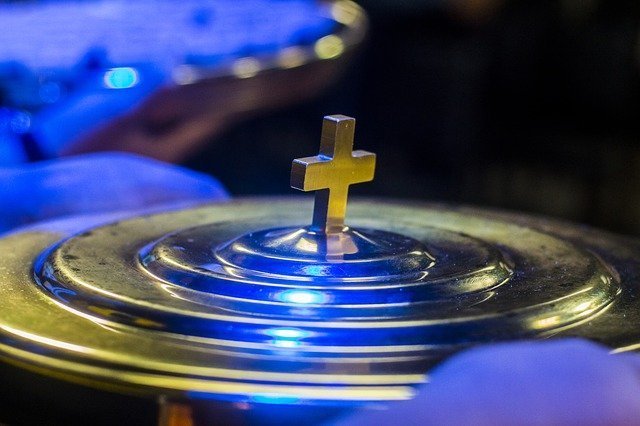53 Jesus said to them, “Very truly I tell you, unless you eat the flesh of the Son of Man and drink his blood, you have no life in you. 54 Whoever eats my flesh and drinks my blood has eternal life, and I will raise them up at the last day. 55 For my flesh is real food and my blood is real drink. 56 Whoever eats my flesh and drinks my blood remains in me, and I in them. 57 Just as the living Father sent me and I live because of the Father, so the one who feeds on me will live because of me. 58 This is the bread that came down from heaven. Your ancestors ate manna and died, but whoever feeds on this bread will live forever.” 59 He said this while teaching in the synagogue in Capernaum.
Let’s face it. This is a hard teaching even today. It just seems so…repulsive. Yet keeping in mind the context brings it to life. And as offensive as it is, that’s the strength of the message that Jesus had been teaching.
Let’s look at this passage in light of the context:
Context
Jesus feeds 5000 — Then he walks on water showing how he is God
Jesus teaches that he is the Bread of Life –Then he talks about partaking of the Son of Man
Jesus goes to the Feast of Tabernacles and teaches – They ask is Jesus the Christ?
And throughout these teachings and actions is the call to believe in him: (6:39-40, 47, 57, 63, etc.).
3 Metaphores:
- Manna, “bread from heaven.” (6:31-34, 38, 41-42, 49-50, 58)
- Bread of Life, that is, bread that brings about eternal life. (6:35-42, 51, 58)
- Flesh and blood as “food.” (6:51b-56)
Overview
So Jesus is saying that in himself there is life, and that believing in him brings life eternal. These metaphores are descriptors and not literal of that life. He isn’t literally “manna,” he isn’t literally a “loaf of bread,” and yet he is “real flesh and blood”?
The obvious reference that we have the hindsight of seeing is that of the cross. The cross was the place where the real flesh and the real blood of Jesus was made as a penalty for us. But how would the hearers of the time understand this when the cross was yet to take place?
The clue is found in v. 63 when the disciples asked Jesus about what he meant:
63 The Spirit gives life; the flesh counts for nothing. The words I have spoken to you—they are full of the Spirit[e] and life.
The words Jesus was speaking were about spirit and life, not the flesh. But what about Jesus saying “real flesh and blood” and then Jesus saying “the flesh counts for nothing”?
The flesh and blood of Jesus served as the sacrifice for our sins. But it was to give us spiritual life (v. 63). Our bodies will rot in the ground so in a sense they count for nothing, but the spiritual life Jesus gives us is what matters. And later on we will receive new bodies. But first Jesus had to redeem us to life.
Conclusion
This teaching has everything to do about the cross of Jesus, Jesus being the Son of God, and Jesus providing redemption for his people. It is not about communion becoming real flesh and blood, although communion is the memorial tribute to the death of Christ.
To believe in Jesus is the meaning of this teaching, and it is a strong one. We completely absorb who he is and his sacrifice on the cross.
Yes, I wish Jesus would have said it differently. But honestly Jesus was never about being politically correct or teaching soft, people pleasing messages. In fact this has been aptly described as THE WORST MESSAGE JESUS EVER PREACHED (sarcasm here), as many of his disciples left him. In fact, almost all of them. Remember they had all just flocked to him because of the miracle he had performed and now they were all walking away.
67 “You do not want to leave too, do you?” Jesus asked the Twelve.
68 Simon Peter answered him, “Lord, to whom shall we go? You have the words of eternal life. 69 We have come to believe and to know that you are the Holy One of God.”

